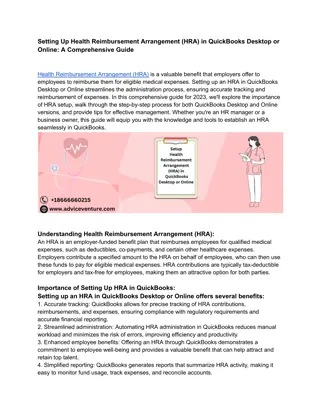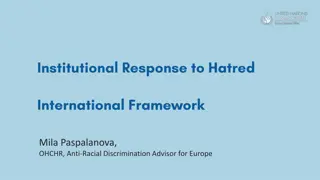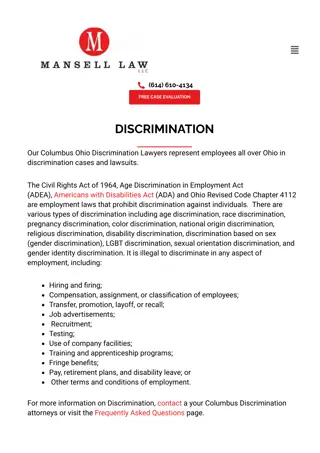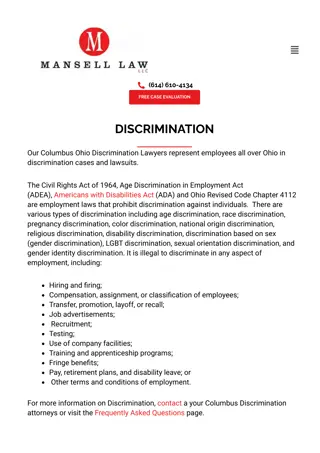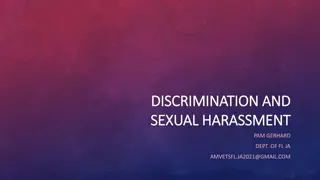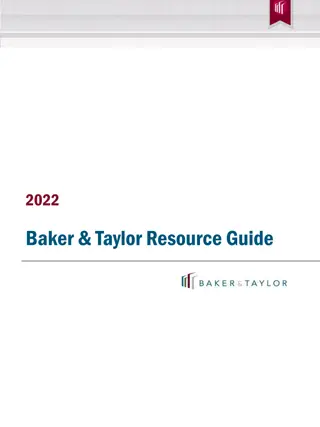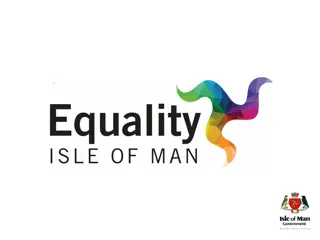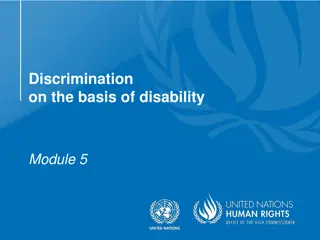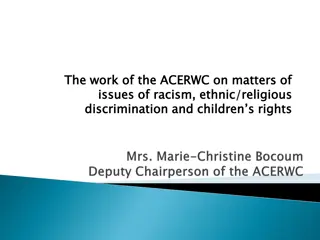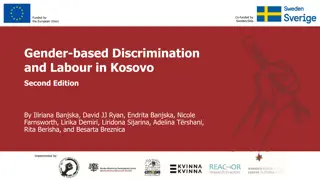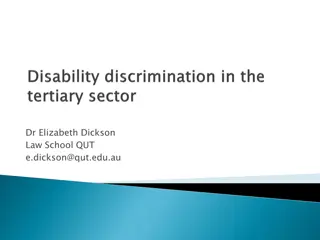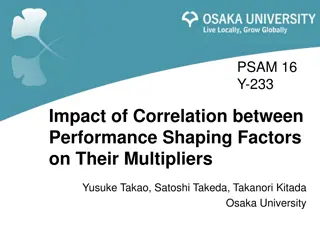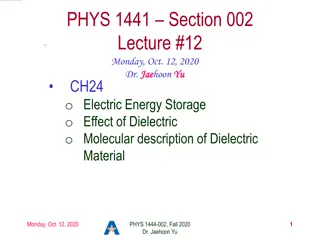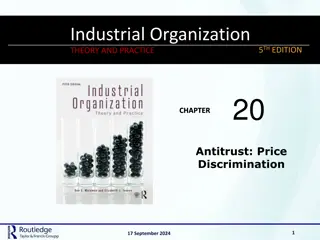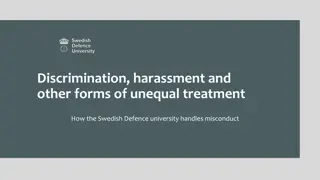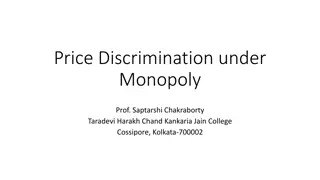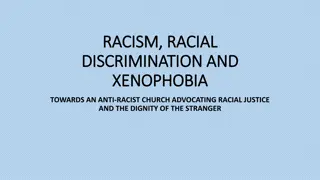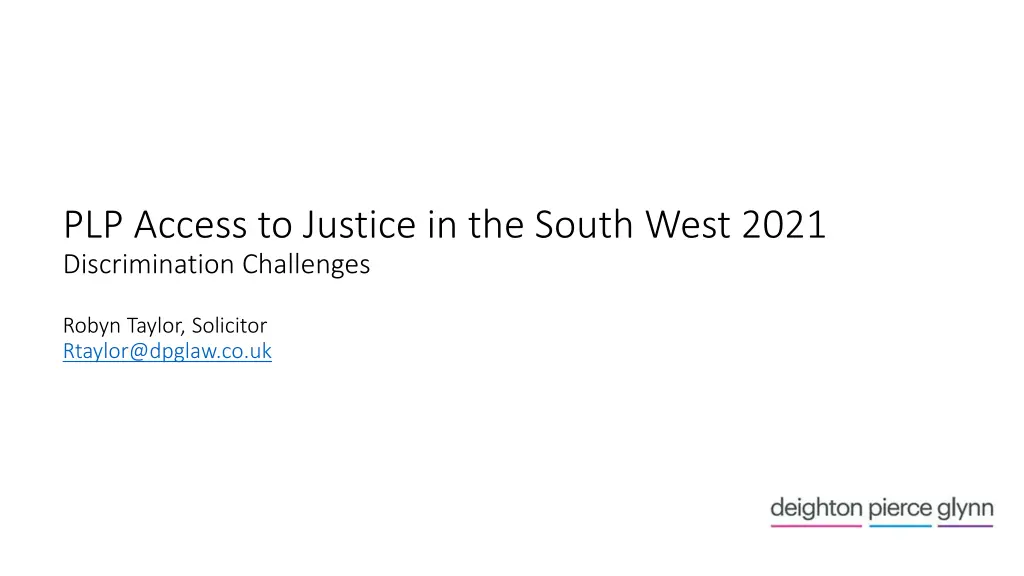
Equality Act 2010 Claims Overview
Discover insights into Equality Act 2010 claims, encompassing protected characteristics, prohibited conduct, relevant relationships, detrimental treatment, exceptions, remedies, private and public law distinctions, County Court jurisdiction, and Article 14 ECHR claims.
Download Presentation

Please find below an Image/Link to download the presentation.
The content on the website is provided AS IS for your information and personal use only. It may not be sold, licensed, or shared on other websites without obtaining consent from the author. If you encounter any issues during the download, it is possible that the publisher has removed the file from their server.
You are allowed to download the files provided on this website for personal or commercial use, subject to the condition that they are used lawfully. All files are the property of their respective owners.
The content on the website is provided AS IS for your information and personal use only. It may not be sold, licensed, or shared on other websites without obtaining consent from the author.
E N D
Presentation Transcript
PLP Access to Justice in the South West 2021 Discrimination Challenges Robyn Taylor, Solicitor Rtaylor@dpglaw.co.uk
Elements of an Equality Act 2010 claim Protected characteristic(s) (Part 2, Chapter 1) Prohibited conduct (Part 2, Chapter 2) Relevant relationship (Parts 3 7) Detrimental treatment Exceptions / defences Remedies (Part 9)
Private law Equality Act 2010 claims Examples of private law discrimination claims FirstGroup Plc (Respondent) v Paulley (Appellant) [2017] UKSC 4 Plummer v Royal Herbert Freehold Ltd No DSS cases
Public law Equality Act 2010 claims Examples of public law discrimination claims R (Ward and others) v Hillingdon LBC and Equality and Human Rights Commission (intervener); R (Gullu) v Hillingdon LBC and Equality and Human Rights Commission (intervener) [2019] EWCA Civ 692 R (On the Application Of) v The Office for Standards In Education, Children's Services And Skills [2020] EWHC 1679 (Admin)
Private or public law claim? The County Court has exclusive jurisdiction (s.113 and s.114) with certain exceptions The County Court has power to grant any remedy which could be granted by the High Court in proceedings in tort, or on a claim for judicial review (see s.119(2)). Further, an award of damages may include compensation for injury to feelings (s.119(4)). BUT, s.113(2) provides: Subsection (1) does not prevent (a) a claim for judicial review The Administrative Court needs to be satisfied that a claim is a genuine judicial review claim, rather than a s.29 claim dressed up as a judicial review. See in particular Hamnett v Essex County Council [2014] 1 WLR 2562. It is helpful if there are other judicial review grounds In general the Administrative Court is not well suited to hear factual disputes of the sort that may arise under section 29 and other similar provisions of the 2010 Act. In suitable cases this can be done and there can be live evidence and cross- examination but that is not normal, whereas the county court is used to conducting such trials on a daily basis. You can include a claim for damages in JR Note early concession in JR claim may give rise to private law claim
Elements of an Article 14 ECHR claim The circumstances of the claim fall within the ambit of a substantive convention right Must be discrimination in the enjoyment of the rights and freedoms set forth in this convention . Not necessary to show violation of substantive provision to fall within the scope of Article 14 just needs to be within the ambit (see Carson) Difference in treatment between two persons who are in analogous situation or treated the same as others in a relevantly different situation Difference in treatment on the ground of one of the characteristics listed or other status Status includes sex, race and colour, language, religion etc. as well as other status (see R (Carson) v SSWP [2005] UKHL 37 and R (Stott) v Secretary of State for Justice [2018] UKSC 59) Other status has been widely drawn Objective justification for that difference in treatment A difference of treatment between persons (or the failure to treat differently persons in relevantly different situations) violates Article 14 only if it has no objective and reasonable justification. That is, if it does not pursue a legitimate aim or if there is not a reasonable relationship of proportionality between the means employed and the aim sought to be realised. (Molla Sali v Greece [GC], 2018 at [135]; Eweida & Others v United Kingdom at [88]) Conventional proportionality four stage test set out in Bank Mellat [2013] UKSC 39
Additional points to note Margin of appreciation As the Court s role is not to substitute the competent national authorities in assessing whether and to what extent differences in otherwise similar situations justified differential treatment, States enjoy a certain margin of appreciation. The scope of that margin will vary according to the circumstances, the subject-matter and the background of the case (see Molla Sali v. Greece [GC], 2018, 136; Stummer v. Austria [GC], 2011, 88; Burden v. the United Kingdom [GC], 2008, 60; Carson and Others v. the United Kingdom [GC], 2010, 61). Manifestly without reasonable foundation test When should the MWRF test be applied? How does it fit with the conventional proportionality test?
Examples of Article 14 claims Secretary of State for the Home Department and Others v R (Joint Council for the Welfare of Immigrants) [2020] EWCA Civ 542 J.D. and A v the United Kingdom (nos. 32949/17 and 34614/17)
Benefits of relying on Article 14 The protected characteristics in the Equality Act are limited and exhaustive. Status under Article 14 is much wider and may more readily tackle the issue of intersectionality which the Equality Act fails to address (for example B.S. v. Spain). Strasbourg case law is highly developed and may add to Equality Act arguments. Longer limitation period. BUT Does not cover all relationships or circumstances covered under the Equality Act 2010.


